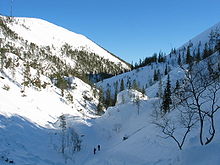User:LPfi/sandbox
Understand
editThe parks are open to the public without any entry or hiking fees. Many have services such as marked hiking trails, cottages, goahtis and saunas for rent. The right to access is usually somewhat restricted in the parks, but the offered free services should compensate that for most visitors. National parks and strict nature reserves are always on state owned land, but other protected areas may be on ground owned by other entities, even privately owned.
There are nature trails in most of the areas listed below. In nearly all but the smallest areas, there are locations for rest (with campfire sites and pit toilets) and in the bigger ones hiking trails and some lodging facilities (often lean-to shelters, in the north more commonly open wilderness huts, in popular areas also rental cabins).
Berry and mushroom picking is usually allowed, in regard to edible species. Taking anything else (such as insects, plants or stones) is usually forbidden in national parks and nature reserves. Dogs must be kept on leash with few exceptions; you may see people letting their dog free, but even a friendly dog can wreak havoc, especially among nesting birds and among reindeer.
Information is usually available in English, but some (such as most information boards along nature trails) may be in Finnish only, or Finnish and either Swedish or Sami.
Most of the really large parks are in the far north, in the Sami native region. Regulations of the parks try not to disturb the traditional livelihood of the Sami. Thus e.g. reindeer herding, hunting, fishing, taking wood for househols needs and even driving are often allowed for the locals also where forbidden otherwise. The local population is sparse enough that this does not generally threaten the ecology of the areas.
National parks, hiking areas and wilderness areas
edit

National parks are the prime destinations for those wanting to see Finnish nature other than normal countryside. They are always on state owned land where the nature is deemed to be of general interest as a sight or for education. As the national parks are always also nature conservation areas there are restrictions to the right to access: collecting stones, plants (other than edible mushrooms and berries) or insects is usually forbidden, wild camping is allowed only in certain areas and entry to some locations may be restricted. Pets may not be kept loose. Services, such as trails, shelters and campfire places more than compensates for this for most visitors. Acquaint yourself to the rules of the park in question, especially if you are not just walking marked trails. The parks are maintained by Metsähallitus, the Finnish forestry administration.
